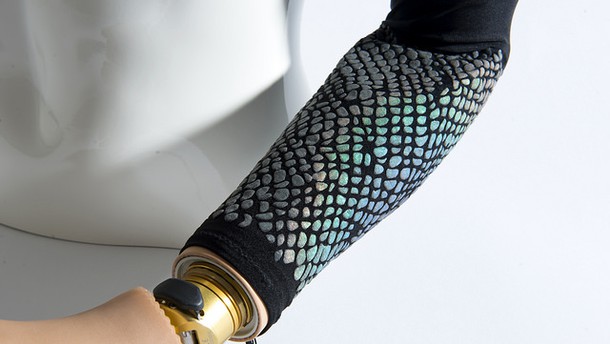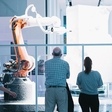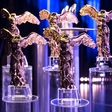
The STARTS Prize, each accompanied by a €20,000 stipend, honors innovative projects at the interface of science, technology and the arts in two categories: one for artistic research, and thus projects with the potential to influence or change the way technology is deployed, developed or perceived, and one for innovative cooperative ventures teaming up industry/technology and art/culture in ways that open up new paths for innovation.
A total of 1,861 entries from 54 countries were submitted in response to an open call that ran from February 1 to March 16, 2016. A committee then shortlisted 30 projects, which were presented to the STARTS jurors for their consideration. Following extensive deliberations, they decided on "Magnetic Motion" by Iris van Herpen (NL) and "Artificial Skins and Bones," a project seminar staged jointly by Berlin Weißensee Academy of Art, Ottobock and Fab Lab Berlin. Both prizewinning projects will be on display at this year's Ars Electronica Festival (September 8-12, 2016) in Linz, where the artists as well as the respective project partners will make appearances. Plus, a major STARTS show will highlight the next BOZAR Electronic Arts Festival (September 22-24, 2016) in Brussels. Additional STARTS presentations are scheduled for autumn in Tokyo and London.
The idea that led to "Artificial Skins and Bones" emerged over the course of a series of workshops staged jointly by the Berlin Weißensee Academy of Art and Ottobock. The direct impetus was delivered by conversations with technicians and physiotherapists on the staff of the world's leading producer of prostheses, as well as people who, as a result of accident or disease, had lost one or more limbs. In conjunction with what was eventually entitled the "Artificial Skins and Bones" project seminar, faculty members and students at Weißensee experimented with materials and, in doing so, drew their inspiration from nature and its patterns, structures and modes of functioning. The individual research projects focused on the language of the senses, interaction with artificial limbs, and the aesthetics of artificial body parts in contrast to the aesthetics of the human body.
Magnetic Motion by Iris van Herpen (NL) Wins the STARTS Prize in the Artistic Research Category
Björk, Lady Gaga and Beyoncé have worn her outfits on stage, and one of her 3-D printed dresses made TIME Magazine's list of the 50 best inventions of the year 2011. Iris van Herpen's collections are both fashion statements and future studies. The designer regularly seeks contact and exchange with scientists, and visits universities and research facilities. And it was a stay at CERN that inspired her to create the Magnetic Motion collection for which she's now being singled out for recognition by the European Commission with a STARTS Prize.
"Magnetic Motion" is the inspiring result of her collaboration with Canadian architect Philip Beesley and Dutch artist Jolan van der Wiel. Beesley is a pioneer in responsive, "living" sculpture, whose poetic works combine advanced computation, synthetic biology and mechatronics engineering. Van der Wiel is an artist and craftsman who experiments with dynamic sculptures and installations full of magnetic tension. Using techniques like injection molding and laser cutting, they jointly created maze-like structures and intricate architectural handwork on dresses, jackets, slacks, skirts and blouses to give them dynamic shapes and surfaces that reflect the body's movement. The controlled structure of the clothes is offset by the chaotic structure of the accessories, among which, due to the nature of magnetic growth, no two items are alike. The shoes, belts, necklaces and clutches were "grown" using magnetic fields.



